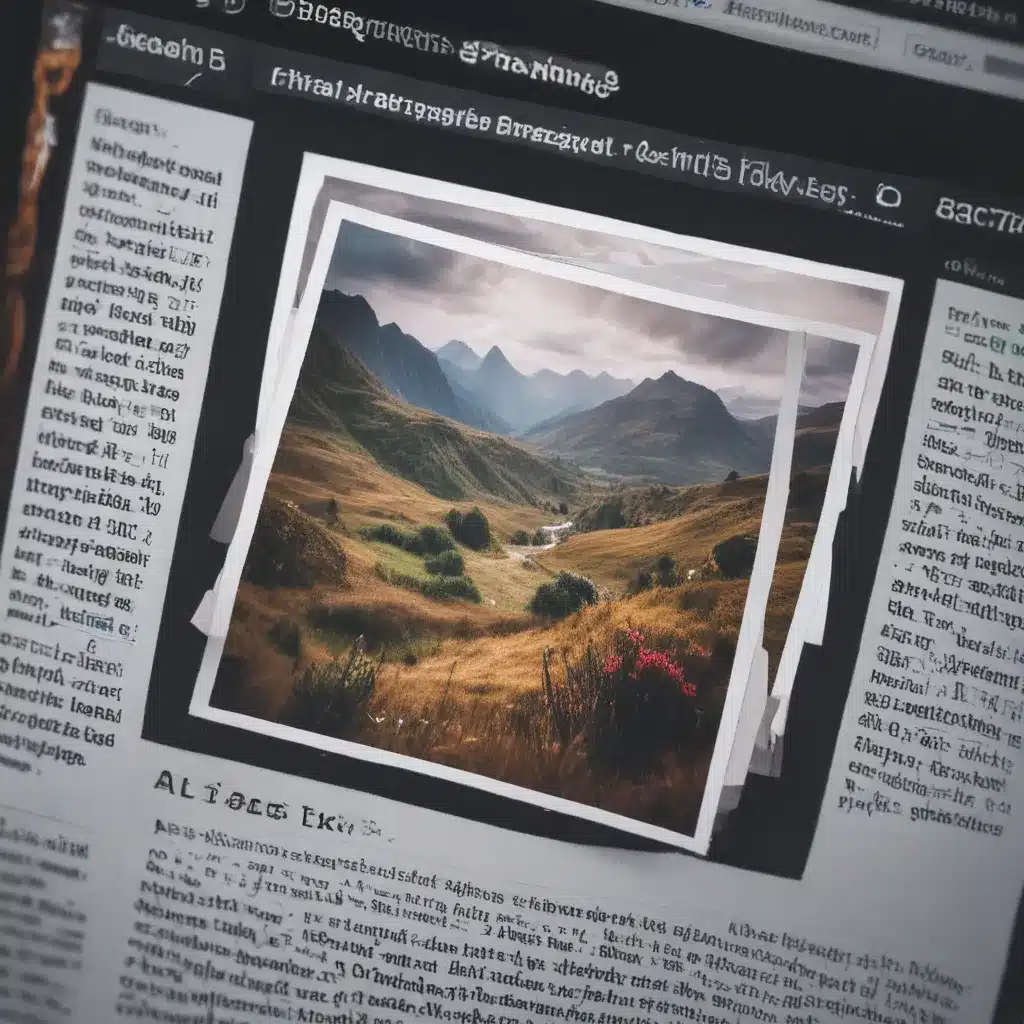
Surprising Benefits of Optimizing Alt Text for Images
As an SEO enthusiast, I’ve always been fascinated by the intricate details that can make or break a website’s visibility. Recently, I stumbled upon a revelation that has completely transformed my approach to image optimization – the surprising benefits of optimizing alt text.
Let me take you on a journey through the world of image SEO, where a seemingly innocuous piece of code can have a profound impact on your online presence.
The Unsung Hero: Alt Text Explained
Picture this: you’re browsing the internet, and an image fails to load. What do you see? Typically, a block of text appears in its place, providing a description of the image. This text is known as the “alt text” or “alternative text,” and it plays a vital role in the world of search engine optimization (SEO).
Alt text is essentially a textual description of an image that helps search engines and screen readers understand the content and context of the visual element. It’s a crucial component of web accessibility, ensuring that users with visual impairments can still comprehend the information conveyed by the images on your website.
The Surprising Benefits of Optimizing Alt Text
Now, you might be thinking, “Well, that’s all well and good, but how does it actually benefit my website’s SEO?” Let me share with you the unexpected advantages of investing time and effort into crafting the perfect alt text.
1. Improved Image Discoverability
One of the primary benefits of optimizing alt text is its impact on image search. Search engines, like Google Images, use the alt text to understand the content of your images and determine their relevance to a user’s query. By crafting detailed, keyword-rich alt text, you increase the chances of your images appearing in search results, driving more traffic to your website.
According to the University of North Carolina’s web accessibility guide, “Alt text should be a concise description of the image that includes keywords relevant to the content of the page.”
2. Enhanced User Experience
While alt text plays a crucial role in SEO, its true power lies in its ability to enhance the user experience. Imagine a scenario where a user is browsing your website on a slow internet connection or with images temporarily disabled. The alt text provides a valuable textual description, ensuring that the user can still understand the context and meaning of the visual elements on the page.
This not only improves accessibility but also demonstrates your commitment to delivering a seamless user experience, which can positively impact your website’s engagement metrics and overall success.
3. Boost in Semantic Relevance
Search engines are constantly evolving, and the way they interpret web content is becoming increasingly sophisticated. By optimizing your alt text, you’re not only improving image discoverability but also enhancing the semantic relevance of your website.
As the University of North Carolina’s guide suggests, “Alt text should accurately describe the image and its purpose, not just list keywords.”
This level of contextual understanding helps search engines better grasp the overall meaning and relevance of your web pages, ultimately leading to improved rankings and visibility.
4. Increased Accessibility and Inclusivity
As mentioned earlier, alt text plays a crucial role in web accessibility, catering to users with visual impairments. By providing detailed and informative alt text, you’re ensuring that your website is inclusive and accessible to a wider audience, including those who rely on screen readers or other assistive technologies.
This not only demonstrates your commitment to creating an inclusive online experience but can also positively impact your brand reputation and user trust.
Putting It All Together: Crafting the Perfect Alt Text
Now that you’re aware of the surprising benefits of optimizing alt text, the next step is to put this knowledge into practice. Here are a few tips to help you craft the perfect alt text for your images:
- Describe the Image Accurately: Alt text should accurately describe the contents of the image, including any relevant details or context.
- Incorporate Relevant Keywords: While keeping the alt text concise, include keywords that are relevant to the page’s content and the user’s search intent.
- Avoid Redundancy: Don’t simply repeat the image file name or the surrounding text in the alt text. Aim to provide additional value and information.
- Keep It Concise: Limit your alt text to 125 characters or less, as this is the recommended length for optimal accessibility and search engine understanding.
- Consider User Intent: Think about how your target audience might be searching for the image and tailor the alt text accordingly.
By following these guidelines, you can unlock the hidden power of alt text and elevate your website’s image SEO to new heights.
Embracing the Unseen: A Holistic Approach to Image Optimization
As an SEO enthusiast, I’ve come to realize that image optimization is not just about technical details – it’s about embracing the unseen and understanding the profound impact of seemingly small elements like alt text.
By optimizing your alt text, you’re not only boosting your website’s visibility and accessibility but also demonstrating your commitment to delivering a remarkable user experience. And let’s not forget the additional benefits of enhanced semantic relevance and increased inclusivity.
So, the next time you upload an image to your website, take a moment to craft the perfect alt text. Trust me, the rewards will be well worth the effort.
And if you’re ever in Manchester, UK, be sure to visit mcrseo.org – the SEO agency that has helped me unlock the surprising benefits of optimizing alt text. They’re the experts in taking your online presence to new heights.



























